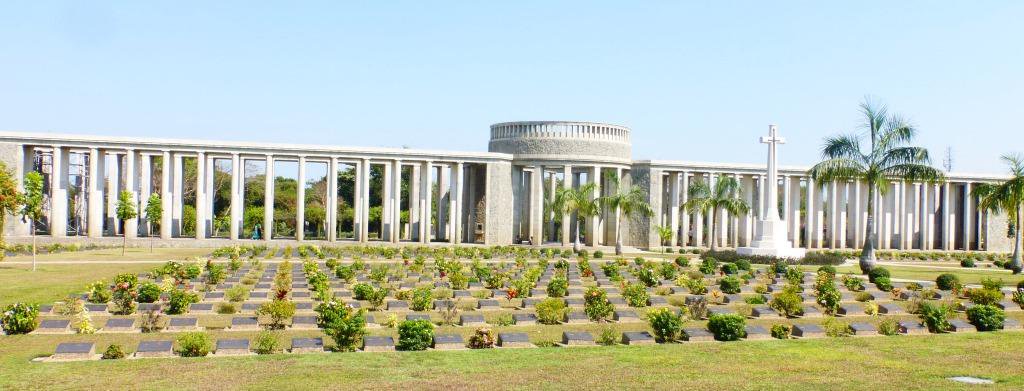02 June 2025
Everything you need to know about VJ Day
VJ Day is marked each year, celebrating the end of the Second World War. Here’s everything you need to know about this important day.
VJ Day
What is VJ Day?
“Japan has today surrendered. The last of our enemies is laid low” – British Prime Minister Clement Attlee, 15 August 1945

Image: Revellers come together in London to celebrate Victory over Japan Day, August 1945 (IWM (D 25636))
VJ Day, or Victory over Japan Day marks the day when Imperial Japan surrendered unconditionally to the Allies.
The war in Europe had ended just over three months earlier with the surrender of Nazi Germany on 8 May 1945.
With VJ Day, the Second World War was finally over, bringing an end to six years of devastating global conflict.
In Australia, Victory over Japan Day is called VP Day, or Victory in the Pacific Day. It was first mentioned as such in the 14 August edition of The Canberra Times and gazetted as a public holiday the following day. New Zealand uses the term VJ Day.
When is VJ Day?
VJ Day occurs on 15 August every year.
This was the date in 1945 on which Japanese Emperor Hirohito announced to his people that Japan had accepted the Allies’ terms of unconditional surrender.
Japan had actually agreed to end hostilities on 10 August, provided Hirohito remained head of state, but it took five days to be formalised. With Allied and Japanese negotiators in deadlock, it took the personal intervention of the Emperor himself to convince Japanese military officials to surrender fully.
Interestingly, Victory over Japan Day is celebrated on 2 September in the United States, marking the date when Japanese representatives and members of the United States military aboard the USS Missouri in Tokyo Bay signed the official surrender documents.
In mainland China, VJ Day is celebrated on 3 September.
Japan marks the National Memorial Service for War Dead on 15 August each year. This is a solemn ceremony dedicated to the civilian and military casualties of the war, but it is not an official public holiday.
Why did Japan surrender in World War II?

Image: Japanese officers submit their swords in surrender in Malaya (present-day Malaysia), August 1945 (IWM (IND 4845))
Many factors caused Japan to surrender. Across the Pacific and in Burma (present-day Myanmar), Japanese armies had been roundly defeated. At sea, the Navy had been routed in successive campaigns.
The Allies were gearing up for a full-scale invasion of the Japanese homeland. What’s more, the Soviet Red Army, which had been instrumental in the defeat of Nazi Germany, was beginning campaigns against the Japanese in the East.
Japan had been economically crippled by the war. Allied submarines, predominantly American but with support from Australian and British fleets, had destroyed much of the nation's merchant shipping. Japan simply could not afford to pay for its war effort by the summer of 1945.
Then there were the atomic bombs.
At 8:15 am on the morning of 6 August 1945, the American B-29 bomber Enola Gay dropped an atomic bomb on the city of Hiroshima, instantly destroying the city centre.
Three days later, another atomic bomb was dropped on Nagasaki, causing similarly horrific levels of destruction.
Japan had refused the conditions of the July 1945 Potsdam Conference, where the Allies outlined that only unconditional surrender would be accepted, in late June. However, the deteriorating military situation overseas, the threat of imminent invasion, the Soviet declaration of war, and the atomic bombs forced Japan’s hand.
Japan had been defeated at great cost on land, in the air, and at sea. Its cities, already devastated by American area bombing, now faced extinction. Japan was effectively spent.
How is VJ Day celebrated?

Image: Rehearsals for the BBC's VJ Day 75th anniversary concert (Sergeant Donald Todd (RLC), UK MOD © Crown copyright 2021)
Much like VE Day, VJ Day is marked with ceremonies and celebrations nationwide, especially in nations most firmly associated with the fight against Japan.
Street parties, parades, and get-togethers are all commonplace. Cities, towns and villages may be covered in bunting too, particularly in England, highlighting the national effort to bring victory in the Far East.
Military parades and services, as well as gatherings and commemorative events, are commonplace on VP Day in Australia and VJ Day in New Zealand.
VJ Day is not widely celebrated in India. The situation post-war was extremely sensitive and the Second World War is largely a reminder of India’s colonial past. However, steps are being made to more widely recognise India’s massive role in the defeat of Japan and more attention paid to its Second World War experience.
However, the cost of victory was high, as King George VI said in his radio address made on the evening of 15 August 1945:
"Our hearts are full to overflowing, as are your own. Yet there is not one of us who has experienced this terrible war who does not realise that we shall feel its inevitable consequences long after we have all forgotten our rejoicings today."
Remembrance, commemoration and thanksgiving services are commonplace on Victory over Japan Day, reflecting on the enormous losses of those caught up in this most destructive of wars.

Want more stories like this delivered directly to your inbox? Sign up for our newsletter for regular updates on the work of Commonwealth War Graves, blogs, event news, and more.
Sign UpHow was VJ Day celebrated at the time?

Image: VJ Day celebrations in Nairobi, Kenya, circa August 1945 (IWM (K 9878))
The news that Japan was about to surrender leaked early, with jubilant Brits beginning their celebrations on 10 August. Servicemen and civilians took to the streets, but the real scenes of celebration happened several days later.
As with Victory in Europe, VJ Day was greeted with huge outpourings of emotion in most of the victorious nations.
London was again packed with revellers and crowds once more flocked to places like Trafalgar Square, Whitehall, Oxford Circus and Buckingham Palace in their tens of thousands. King George VI and the Royal Family came to the Palace balcony to join in the festivities.
Pubs, restaurants, clubs, and public spaces were brimming with happy celebrants. After six long years, the world was finally at peace.
At military bases around the world, military personnel held their own celebrations. Parades were a common sight. Over 5,000 servicemen and women, including troops of East African Command, marched through the streets of Nairobi.
In Australia and New Zealand, the defeat of Japan brought widespread jubilation. As the war in the Far East was much closer to home, the victory in Europe had been met with more muted celebrations than in the UK.
But with VP Day decisively ending the threat of Japanese invasion, the country was able to let off steam. As in London, Australian and New Zealand city streets were full of happy, relieved faces.
These were interspersed with more solemn remembrance ceremonies. Thousands flocked to the Shrine of Remembrance, originally built to commemorate fallen Aussie soldiers of the Great War, to pay their respects and mourn loved ones.
In some places, celebrations began to get out of hand. Take Auckland, New Zealand, for example.
While there were fewer organised events there than in the capital, Wellington, revellers poured into pubs, clubs, hotels, and other drinking places. Soon, they took to the streets, where the rowdier element began to smash bottles. It’s said that at least 15 tons of glass were swept up after the celebrations died down.
It’s hard to blame them for such an outpouring of emotions. The relief felt by the Second World War finally ending must have been huge.
VJ Day Commonwealth Casualty Stories
Here is a small selection of the thousands of Commonwealth servicemen who died in the final battles of the Second World War in the Far East. Sadly, they never got to see Victory over Japan Day, but their sacrifice helped ensure the final defeat of Imperial Japan.
Flight Sergeant Arnold Alexander Lockyer
 Image: Flight Sergeant Arnold Lockyer
Image: Flight Sergeant Arnold Lockyer
Arnold Alexander Lockyer was born in Port Hedland, Western Australia, on 4 May 1915 to Samuel and Sylvia Lockyer.
He was schooled at Roebourne State School and, upon leaving education in 1929, he worked as a truck driver for Bob Ive Automotive Engineers in Perth. Prior to his enlistment in the armed forces, his job was listed as a courier.
Arnold was married to Susanna Philomena Lockyer. Together, the couple had two children, Ronald and John.
After basic training, Arnold served as a flight mechanic. As his career progressed, Arnold was variously a Fitter IIE, Flight Engineer and Flight Sergeant after attending Air Gunnery School.
Now serving aboard aircraft, Arnold converted to B-24 Liberator heavy bombers in the latter half of 1944.
On 27 July 1945, Arnold was a Wireless Operator/Air Gunner on B-24 Liberator serial A72-92 on an air reconnaissance flight over North Celebes, Indonesia. The aircraft was hit by Japanese anti-aircraft fire and crashed near Tomohon.
Arnold and two other crew members managed to bail out of their doomed plane. Sadly, one of the survivors was killed on 28 July. Arnold and his fellow crewman were captured. They were taken to the Japanese military prison at Kaaten, North Celebes.
Despite WW2 in the Pacific coming to a close, Arnold would not survive captivity and see Victory over Japan Day. He was killed by chloroform on the night of 20 August 1945, 5 days after the Japanese surrender, aged 30. Arnold’s murderers were later tried and executed for war crimes.
Arnold was laid to rest in Ambon War Cemetery, Indonesia, where his war grave sits to this day.
Lieutenant Robert Hampton Gray VC
 Image: Lieutenant Robert Hampton Gray VC
Image: Lieutenant Robert Hampton Gray VC
Robert Gray was born on 2 November 1917 in Trail, British Columbia, Canada, but grew up in Nelson, the son of jeweller and Boer War veteran Randolph Gray and his wife Nellie.
He was educated at the Universities of Alberta and British Columbia, gaining a Bachelor of Arts, before enlisting in the Royal Canadian Naval Volunteer Reserve at HMCS Tecumseh in Calgary, Alberta.
Robert served in the aerial wing of the Royal Canadian Navy. Training in England and Canada, he was first assigned to 757 Naval Air Squadron before transferring to Africa. Based in Nairobi, he spent two years on shore-based squadron duties.
In 1944, Robert moved to 1841 Naval Air Squadron, flying off the aircraft carrier HMS Formidable. Between 24-29 August 1944, he took part in the unsuccessful Operation Goodwood raids on the German battleship Tirpitz in Norway.
On 29 August, Robert participated in an attack on three German destroyers, where his aircraft’s rudder was shot off, for which he was Mentioned in Dispatches. He was again, somewhat belatedly, MiD again for his part in the Tirpitz raid on January 16, 1945.
In April 1945, Formidable joined the British Pacific Fleet. She and her complement of aircraft were subsequently involved in the Invasion of Okinawa. Soon, Robert and 1841 Squadron were attacking the Japanese mainland.
He was awarded the Distinguished Service Cross for his part in the sinking of a Japanese destroyer on July 28th – however, the award was not announced until August 21st, 1945, with the citation, "For determination and address in air attacks on targets in Japan".
On August 9, 1945, at Onagawa Bay, Robert led an attack on a group of Japanese naval vessels, sinking the Etorofu-class escort ship Amakusa before his plane was hit and crashed into the bay.
For this action, he was awarded a posthumous Victoria Cross. Robert was the last Canadian recipient of the British Empire’s highest military honour in the Second World War.
His medal citation gives the following details:
“In the face of fire from shore batteries and a heavy concentration of fire from some five warships Lieutenant Gray pressed home his attack, flying very low in order to ensure success, and, although he was hit and his aircraft was in flames, he obtained at least one direct hit, sinking the destroyer. Lieutenant Gray has consistently shown a brilliant fighting spirit and most inspiring leadership.”
Corporal Ronald Francis Shaw
 Image: Corporal Ronald Francis Shaw
Image: Corporal Ronald Francis Shaw
Ronald Shaw was born on 28 November in Edmonton, London.
During the Second World War, Ronald enlisted in the Royal Air Force, serving as an engine fitter at first in Egypt and later the Far East. He reached the rank of Corporal during his military career.
In 1942, on a flight between Java and Sumatra, the aircraft carrying Roland and his comrades got into difficulties. Falling from the sky, the aircraft crashed near Lahat, South Sumatra.
Ronald was severely injured in the crash and was later taken as a prisoner of the Japanese.
Ronald was kept in a Javanese PoW camp before being put aboard a ship destined for Japan.
Known as “hell ships”, the Japanese transporters were more suited to carrying freight than human cargo. Prisoners were crammed into holds with sparse room to sit or lie down. Ventilation was extremely limited, and temperatures soared under the baking tropical sun.
Food, water, medical care, and sanitation were essentially non-existent. To make matters worse, hell ships carried no identifying markers, making them easy targets for Allied navies.
Ronald was aboard the hell ship Tamahoko Maru when it was torpedoed by a US submarine on Jun 24, 1944. The ship was carrying over 770 Prisoners of War, a mix of Dutch, British, American, and Australian captives, when she went down. Only 212 survived.
500 Japanese soldiers were also aboard the Tamahoko Maru when it went down. An Imperial Japanese Navy vessel collected the military survivors but left the non-Japanese. The PoWs were collected by a small whaling vessel the following day and dropped off in Nagasaki on the Japanese mainland.
Ronald and his fellow captors were held at the Fukuoka 14 prison camp in Nagasaki, which housed around 440 Allied PoWs. Ronald was put to work in an iron foundry near to the camp.
On 9 August 1945, Nagasaki was struck by the second US atomic bomb attack on Japan. Fukuoka 14 was far enough away from the epicentre to be spared the initial firestorm but was still hit by the blast shockwave.
Ronald is believed to have been killed in the shockwave, crushed by a collapsing wall. A number of Dutch and American POWs were also killed as a result of the atomic explosion.
Ronald’s ashes were cremated and interred at CWGC Yokohama, only a few short days before VJ Day and the end of the Second World War.
Explore more VJ Day memorial sites.
Experience VJ Day with Commonwealth War Graves
2025 marks the 80th anniversary of VJ Day and the Second World War.
Join us this year to mark this very special occasion with events, talks, tours and stories of the fallen.
Engage in a virtual tour with the CWGC app to discover more about our sites in Asia and worldwide and discover more about the legacy of those who gave their lives in the push to VJ Day.

